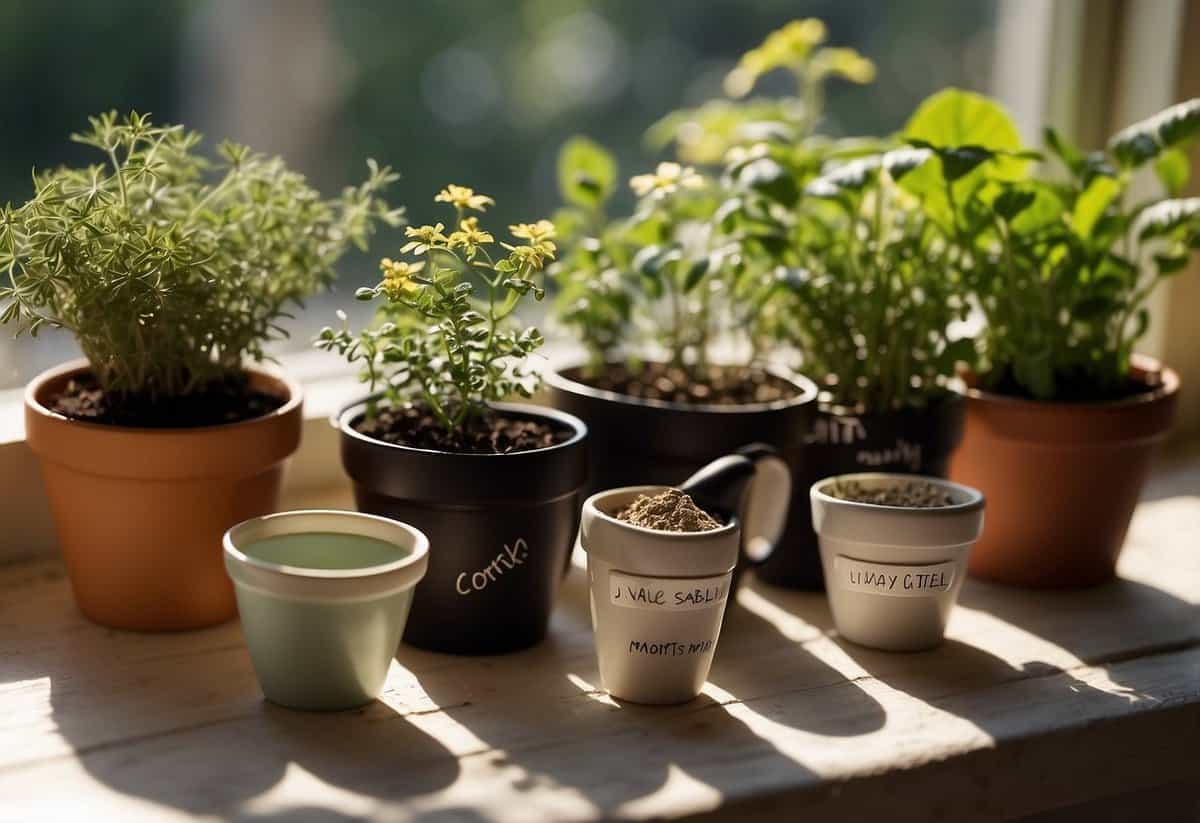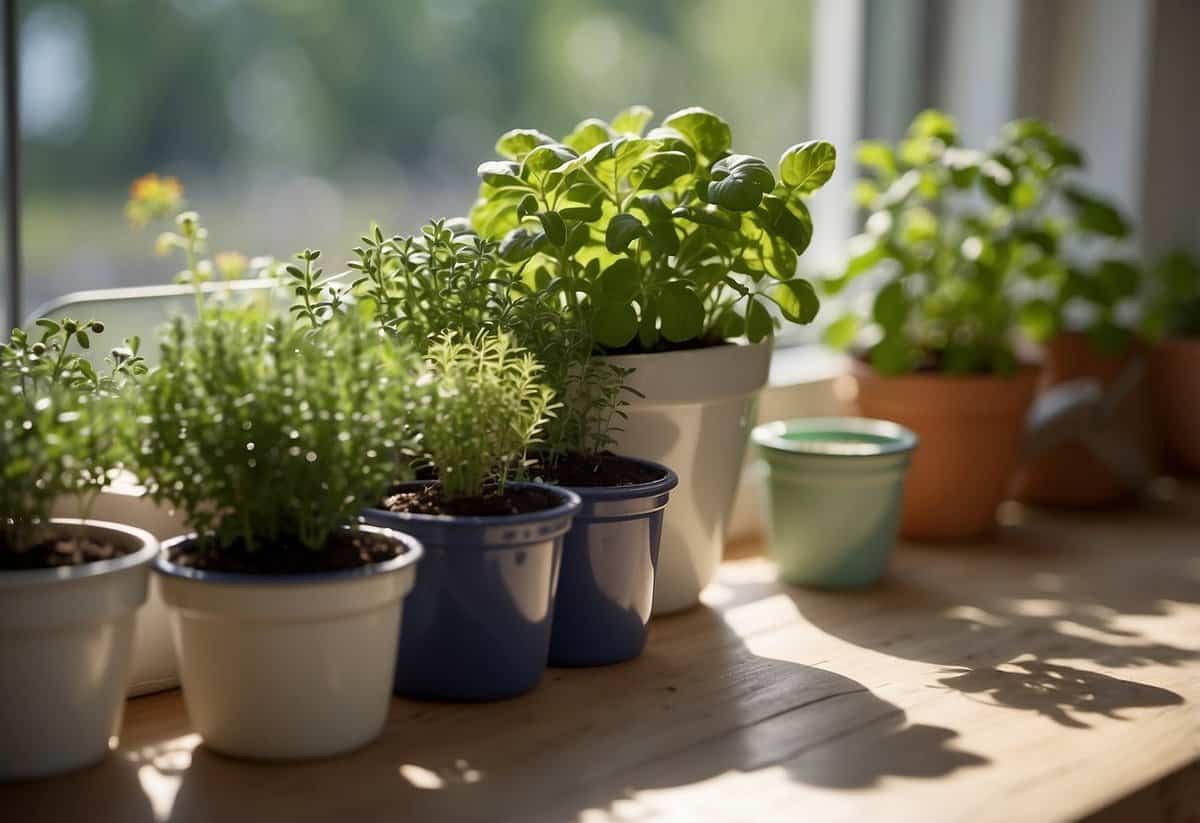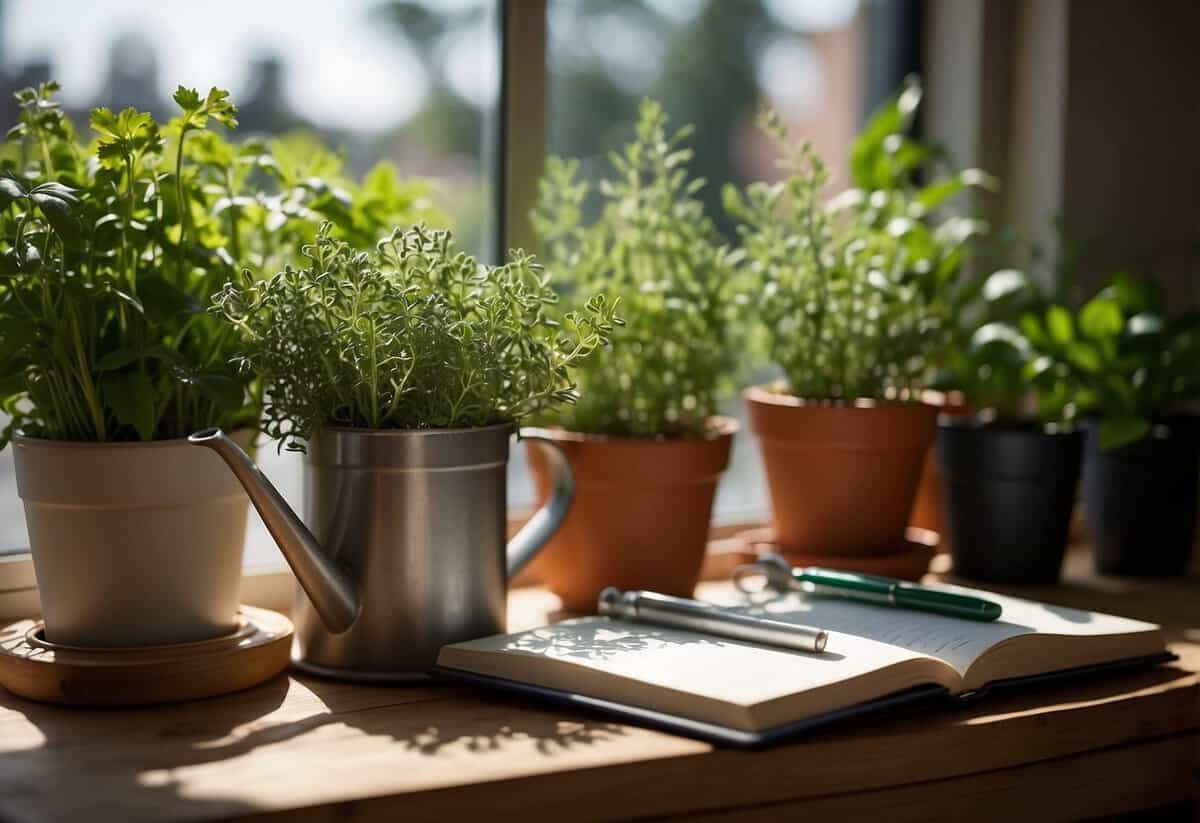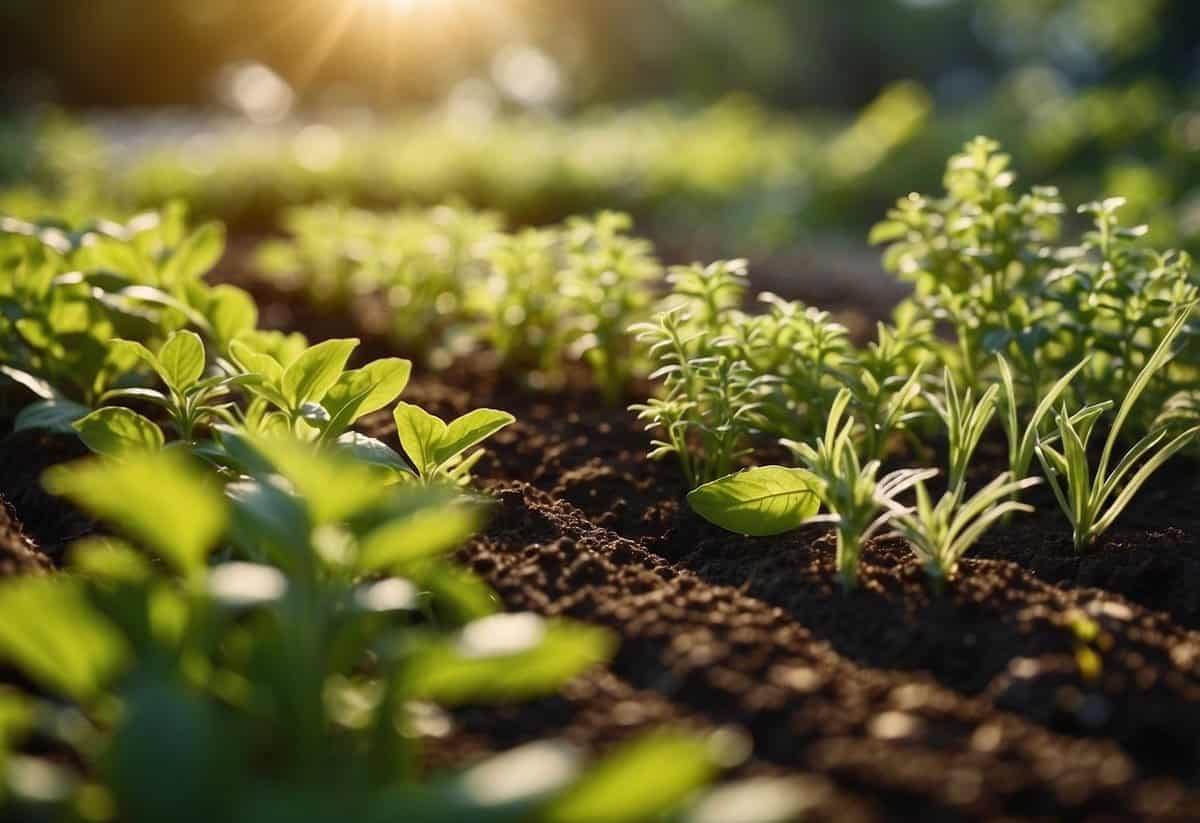Essential Tips for Starting a Kitchen Herb Garden: A Beginner’s Guide
Growing your own herbs in the kitchen is a rewarding and enjoyable hobby. It can provide you with fresh ingredients for your meals, improve the air quality in your home, and add a touch of greenery to your living space. Starting a kitchen herb garden can be simple and fun with the right guidance.

You’ll discover the benefits of having easy access to fresh herbs without needing to visit the store. This article will guide you through the essential steps to successfully start and maintain your own kitchen herb garden.
1) Choose the Right Herbs

Think about what herbs you use most in your cooking. Basil, rosemary, and parsley are popular choices. It’s best to start with these.
Check your climate and growing conditions. If you live in a hot area, thyme might be a good option. For cooler areas, mint could thrive well.
Remember to pick herbs suited to your local environment to ensure they grow healthily.
2) Start with Quality Soil

The foundation of your kitchen herb garden is good soil. Quality soil supports plant health and growth.
Mix garden soil with compost to enrich it with nutrients. Adding coarse sand can help with drainage. This is especially important for herbs that don’t like their roots to stay wet.
Consider using a high-quality potting mix. This provides a good balance of moisture retention and drainage.
Ensure the soil is loose and well-aerated to let roots grow freely. Happy planting!
3) Use Proper Containers

Choosing the right containers is key for your kitchen herb garden. Most herbs prefer shallow pots, but some plants like dill and lavender need larger 5-gallon containers for their roots.
Make sure your containers have drainage holes. Good drainage prevents water from pooling and keeps your herbs healthy. Always check before planting your herbs to avoid waterlogged roots.
4) Ensure Good Drainage

Proper drainage is crucial for the health of your kitchen herb garden. Herbs don’t like to sit in soggy soil because it can lead to root rot.
Use pots with drainage holes. This ensures any excess water can escape easily.
If you’re planting directly in a garden bed, make sure the soil is well-draining. You can mix in compost or sand to improve drainage.
5) Provide Plenty of Light

Herbs love sunlight. Most herbs need 6-8 hours of sunlight daily. If you don’t have a sunny window, don’t worry.
You can use grow lights. These lights mimic sunlight and help your herbs thrive.
Make sure your grow lights are placed close to the plants. Adjust the height as your herbs grow taller.
6) Water Consistently

Keeping your herbs well-watered is key to their growth.
Water your herbs when the top inch of soil feels dry to the touch. This helps prevent overwatering, which can lead to root rot.
Indoor herbs typically need watering once a week. Using a small amount of fertilizer can also help.
For more tips, check out this guide on herb gardening.
7) Fertilize Regularly

It’s important to give your herbs a little boost with fertilizers. Most herbs don’t need a lot, but a light application can go a long way.
You can use compost or a balanced, water-soluble fertilizer. Adding it once or twice during the growing season is usually enough to keep your herbs healthy and flavorful.
Remember, too much fertilizer can harm them. Stick to a light touch for the best results and enjoy a lush, aromatic herb garden right in your kitchen!
8) Prune Regularly

Pruning is important to keep your herbs healthy and growing. By trimming the tops of the stems, you encourage the plant to become bushier.
Avoid cutting the larger leaves at the bottom because they give the plant support. Use sharp, clean scissors to make clean cuts and avoid damaging the plant.
Prune regularly, especially during the growing season, to prevent your herbs from becoming too leggy. Pruning also helps to produce a larger harvest.
9) Harvest the Right Way

When your herbs mature, it’s time to harvest.
For most herbs, you should cut off the top 2 to 3 inches of each sprig. Leave enough green leaves to allow the plant to keep growing.
Harvest in the morning after the dew has dried. This will give you the best flavor and oils from the herbs.
For more info, check out essential tips for home gardeners.
10) Rotate Crops Seasonally

Rotating crops in your herb garden helps keep the soil healthy. Different plants use different nutrients, so changing the plants’ locations prevents the soil from becoming depleted.
Regular rotation also helps reduce pests and diseases. Many pests and diseases tend to stick around if you plant the same herbs in the same spot every season.
For a simple approach, divide your garden into sections and change the plants in each section every growing season. This will keep your herbs thriving and your garden looking great.
Choosing the Right Herbs

When starting a kitchen herb garden, it’s crucial to choose herbs that suit your culinary needs and climate. Selecting the right herbs can lead to a more successful and enjoyable gardening experience.
Popular Kitchen Herbs
Some herbs are particularly well suited for kitchen gardens because of their versatility and ease of growth. Basil is a favorite for its delightful aroma and use in numerous dishes, from pasta to salads. Rosemary is hardy and great for seasoning meats. Thyme and oregano are also popular and easy to grow, often used in Mediterranean dishes.
Mint is excellent for both cooking and beverages but can become invasive, so it’s best planted in a container. Cilantro is essential in many cuisines, though it prefers cooler weather and can bolt in the heat. Chives add a light onion flavor and are very straightforward to grow.
Herbs Based on Cooking Needs
Choose herbs based on what you cook most often. If you prepare a lot of Italian dishes, growing basil, oregano, and parsley would be beneficial. For fresh salads and drinks, mint and cilantro are great choices.
For baking and sweet dishes, lavender and lemon balm bring unique flavors. If you enjoy Asian cuisine, consider planting lemongrass and Thai basil. Each herb should cater to what you cook frequently.
Assess your climate. Sage and rosemary thrive in drier conditions, while basil and cilantro prefer more moisture. Tailoring your herb selection to both your cooking habits and growing conditions will ensure a thriving kitchen herb garden.
Planting and Care Tips

Having the right soil and pots, as well as proper watering techniques, is crucial for a thriving kitchen herb garden. Knowing these basics ensures your herbs stay healthy and productive.
Soil and Pot Requirements
Choose well-draining soil for your kitchen herb garden. A good mix often includes garden soil, sand, and moss. This blend helps prevent water from pooling, which could rot the roots. Use containers with drainage holes to avoid water buildup.
Select pots that are large enough to support the root system. Small pots can stunt growth. Make sure each pot allows enough space for the herb to grow comfortably. Terra cotta pots are great because they’re breathable, but you can use any container as long as it has drainage holes.
Watering Guidelines
Water is essential but too much can harm your herbs. Keep the soil moist but not soggy. Most herbs need watering about 1-2 times a week. Always check the soil before watering; if the first inch is dry, it’s time to water.
Avoid getting water on the leaves to prevent mold and mildew. Water at the base of the plant. In hotter months, herbs may need more frequent watering. During cooler seasons, you might need to water less. Always adjust based on the herb’s needs and environmental conditions.







